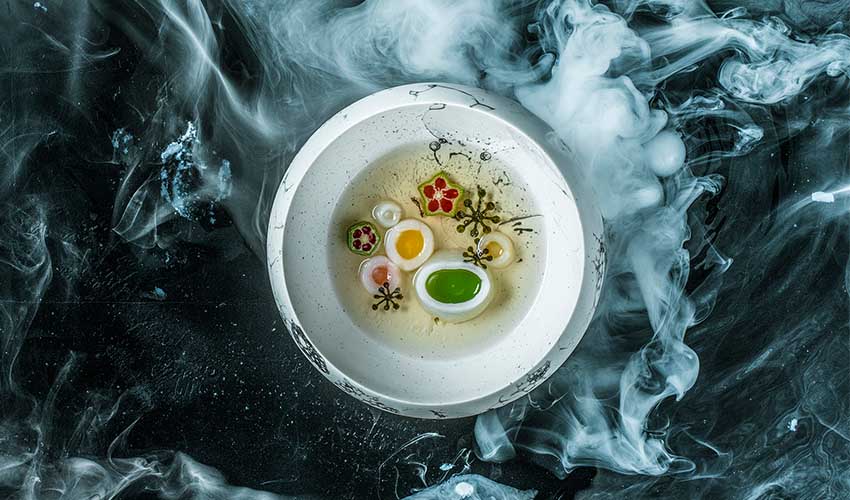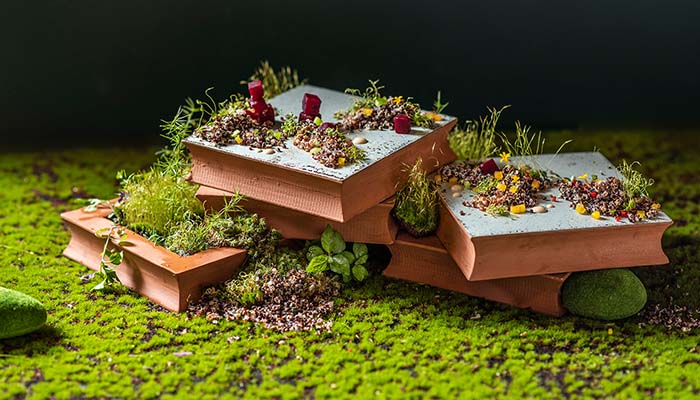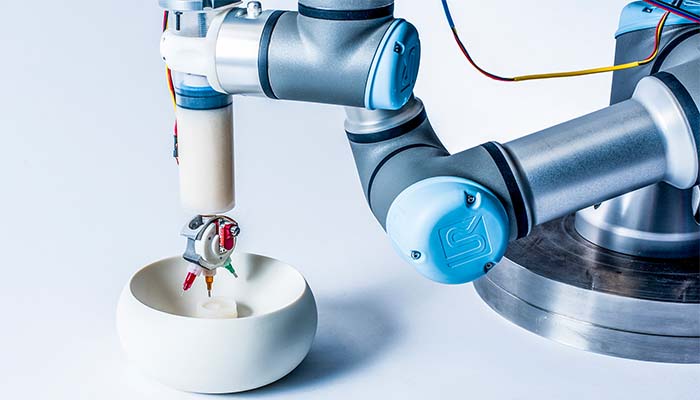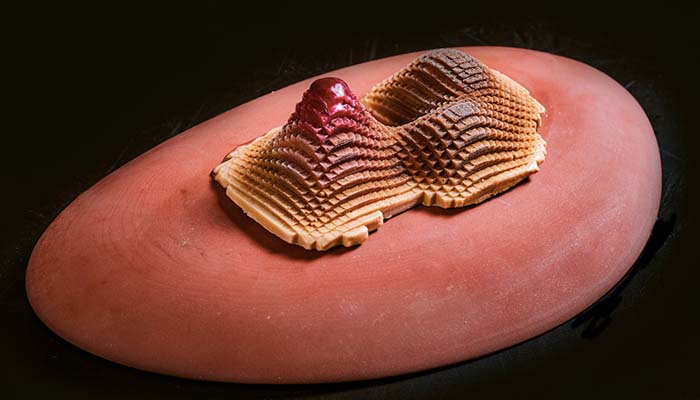Digital Gastronomy, infusing traditional cooking with 3D printing technologies

Digital Gastronomy is a culinary vision that seeks to offer hybrid solutions. They are hybrid in that they combine traditional cooking with new computational abilities. Researcher Amit Zoran, part of the Digital Gastronomy project, told us how his research in the Hybrid Lab at the Hebrew University of Jerusalem focuses on deploying digital fabrication instruments in traditional kitchens to create these hybrid recipes. We had the opportunity to ask him a few questions to learn more about his vision and how & where he sees this technology being adopted.
3DN: Could you present yourself and your link with 3D printing?

I am a Senior Lecturer at the School of Engineering and Computer Science at The Hebrew University of Jerusalem (HUJI), and I run the
Hybrid Lab at HUJI, where we (my students and I) focus on
digital design, craft and fabrication, and human-computer interaction (HCI) research. I hold a Ph.D. and a M.S. in Media Arts and Science from the MIT Media Lab, a M.Des. in product design from Bezalel, and a B.Sc. in Communication System Engineering from Ben-Gurion University, Israel.
In my lab we study the design and implementation of hybrid solutions, merging contemporary (and digital) design and fabrication capabilities within traditional disciplines. We also learn the ethnographic aspect of making and creativity, investigating how traditional craft practice can contribute to new design and fabrication research to empower today’s creative practices. The lab is facilitated with digital design and fabrication tools and materials, craft studio, tracking devices, and an electronic prototyping workshop. Hence, 3D printing and digital fabrication, in general, are central technologies in my research.
3DN: How did your culinary vision of merging digital fabrication instruments and traditional cooking come about?
Global food systems face serious challenges considering the need to feed the growing population in unstable environmental conditions, and this is one of the biggest challenges humanity faces today. Hence, many people, including myself believe that these food systems will need to rely on computers for efficiency, control, optimisation,
minimisation of waste, and tailoring personal diets. Working in the field of hybrid craft (merging
digital & traditional making practices) I was always attracted to cooking, as a unique form of craft, hence it makes sense for me to shift my interest to this fascinating field of
Digital Gastronomy, where we ask how a chef can enjoy the creative potential
digital technologies can bring to traditional cooking.

Photo Credits: Ariel Bezaleli Mizrahi, Alexander (Zoonder) Lachnish and Sivan Moloko Roshianu
3DN: What are you able to do with digital fabrication in the kitchen?
Currently, we focus on a specific contribution: developing tools (software and hardware) and recipes that demonstrate the creative contribution of computers to cooking, i.e. giving cooks the capabilities to control flavour in a discrete, local, precise way, in a similar way to what CGI and image processing introduced to traditional photography when we moved from analog medium to digital one with digital cameras, pixels, and editing software.
3DN: Can you tell us more about the technology and software you use?
In the beginning, we worked with a modified version of a Printrbot 3D printer using a paste extruder, while now we use a Universal robot-arm and an extruder we developed that includes a changeable nozzle diameter. In addition to 3D printing, we work with a laser cutting machine for laser-induced heating,
CNC milling, and a custom design “programmable” mould which allows us to change the casting mould shape (mostly for desserts). In addition, we develop control software and a special GUI to allow chefs to
digitally generate the shape of 3D printed noodles.

Photo Credits: Ariel Bezaleli Mizrahi, Alexander (Zoonder) Lachnish and Sivan Moloko Roshianu
3DN: Where do you think this technology would likely be integrated ?
First, we envision this technology will penetrate elite cuisine and special restaurants, but we aim for broader integration of digital gastronomy in domestic kitchens to come later.
3DN: What are the biggest challenges of trying to integrate digital fabrication instruments in cooking?
There are several challenges: firstly, we don’t have enough
digital cooking tools that are flexible, reliable and fast. Secondly, cost (robot arms are expensive!). Also, software tools – considering current
CAD (computer-aided design) tools, they are not sufficient for cooking, and there is a big challenge there. Finally,
gastronomy culture – if we don’t develop meaningful methods, recipes, and dishes, no one will ever use this.

Photo Credits: Ariel Bezaleli Mizrahi, Alexander (Zoonder) Lachnish and Sivan Moloko Roshianu
3DN: Where is your research headed now?
Hopefully, for broader exposure and than a digital gastronomy cooking book 🙂
3DN: Any last words for our readers?
Bon-appetit!
You can find more information about Digital Gastronomy
HERE. This is not the first time we talk about 3D printing being combined in the kitchen, you can find more information in our
guide to 3D printed food.
What did you think of Digital Gastronomy? Let us know in a comment below or on our
Facebook and
Twitter page! Don’t forget to sign up for our free weekly
Newsletter, with all the latest news in 3D printing delivered straight to your inbox!

 I am a Senior Lecturer at the School of Engineering and Computer Science at The Hebrew University of Jerusalem (HUJI), and I run the Hybrid Lab at HUJI, where we (my students and I) focus on digital design, craft and fabrication, and human-computer interaction (HCI) research. I hold a Ph.D. and a M.S. in Media Arts and Science from the MIT Media Lab, a M.Des. in product design from Bezalel, and a B.Sc. in Communication System Engineering from Ben-Gurion University, Israel.
I am a Senior Lecturer at the School of Engineering and Computer Science at The Hebrew University of Jerusalem (HUJI), and I run the Hybrid Lab at HUJI, where we (my students and I) focus on digital design, craft and fabrication, and human-computer interaction (HCI) research. I hold a Ph.D. and a M.S. in Media Arts and Science from the MIT Media Lab, a M.Des. in product design from Bezalel, and a B.Sc. in Communication System Engineering from Ben-Gurion University, Israel.








